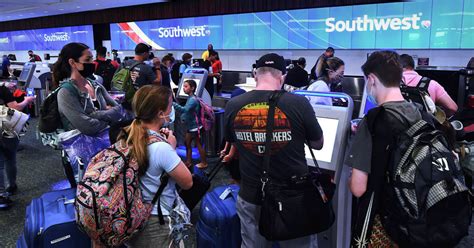
A passenger’s excitement over a complimentary first-class upgrade on a recent flight quickly turned to dismay after discovering the upgrade was necessitated by a fellow passenger’s medical emergency requiring the extra space and immediate access for medical personnel.
The passenger, identified only as a traveler on a United Airlines flight, initially rejoiced at the unexpected perk, only to learn the sobering reason behind it mid-flight, according to details shared in a social media post that has since gone viral. While the free upgrade to first class is generally a welcome surprise, the circumstances surrounding this particular upgrade highlighted the somber reality of in-flight medical emergencies and the often-unseen challenges faced by airline staff.
The incident unfolded when the passenger, preparing for a routine flight, was informed at the gate of the upgrade. Initially thrilled, the passenger settled into the upgraded seat, anticipating a more comfortable journey. However, the initial excitement soon dissipated when a flight attendant explained the real reason for the upgrade.
“I went from feeling like I hit the jackpot to feeling deeply concerned for the person needing medical attention,” the passenger recounted in their online post. According to the post, a passenger had fallen severely ill, and the first-class cabin provided the necessary space for them to lie down and receive immediate assistance.
This incident highlights the complexities airlines face in managing in-flight medical emergencies. When a passenger experiences a health crisis mid-air, airlines must act swiftly to assess the situation, provide immediate care, and determine whether an emergency landing is necessary. In this particular case, the availability of a first-class cabin allowed the affected passenger to receive more comfortable and immediate attention, which might not have been possible in the more confined spaces of the economy section.
In-flight medical emergencies are more common than many travelers realize. A study published in the New England Journal of Medicine found that in-flight medical events occur at a rate of approximately 16 per one million passengers. Common medical issues include fainting, respiratory problems, cardiac issues, and gastrointestinal distress. Airlines are generally equipped with basic medical kits and trained flight attendants who can provide initial assistance. However, more serious cases often require the intervention of medical professionals, either onboard or through remote consultation with ground-based medical teams.
The United Airlines passenger’s experience serves as a stark reminder that unexpected benefits can sometimes come with unforeseen and serious underlying issues. The story also sheds light on the critical role that airline staff play in managing medical emergencies and ensuring passenger safety and comfort, even under challenging circumstances. The social media post has sparked considerable discussion about the need for better awareness and preparedness for in-flight medical events.
According to experts in aviation safety, airlines follow strict protocols for handling medical emergencies. These protocols often involve assessing the passenger’s condition, seeking assistance from any medical professionals on board, and contacting ground-based medical support for guidance. The decision to divert a flight for medical reasons is typically based on the severity of the passenger’s condition and the advice of medical professionals.
The episode also raises questions about the ethical considerations surrounding passenger privacy in such situations. While the details of the ill passenger were not publicly disclosed, the incident underscores the fine line between informing fellow passengers about the situation and protecting the privacy of the individual requiring medical attention. Airlines must strike a balance between providing necessary information to ensure passenger understanding and maintaining confidentiality to respect the affected passenger’s rights.
Moreover, this incident highlights the crucial role of first-class cabins in accommodating passengers with medical needs. The extra space and enhanced facilities in these cabins can be invaluable in providing comfort and care to individuals experiencing medical emergencies during flight. In some cases, the availability of a first-class cabin may even influence the decision to divert a flight, as it can provide a more suitable environment for administering medical treatment.
The passenger’s initial excitement and subsequent concern mirror the range of emotions that can arise in unexpected travel situations. While most travelers hope for smooth and uneventful flights, the reality is that medical emergencies and other unforeseen events can occur at any time. Being aware of these possibilities and understanding how airlines respond to them can help passengers better prepare for and cope with unexpected situations during their travels.
United Airlines has not issued an official statement regarding this particular incident, but the airline’s general policies regarding passenger medical emergencies are well-documented. According to United’s website, the airline has procedures in place for assessing and responding to medical situations, including providing basic medical assistance, contacting medical professionals, and diverting flights when necessary. United also encourages passengers with pre-existing medical conditions to inform the airline in advance and carry any necessary medications and medical documentation.
The incident has also prompted discussions about the adequacy of medical training for flight attendants. While flight attendants receive training in basic first aid and CPR, some argue that more comprehensive medical training is needed to enable them to effectively manage a wider range of medical emergencies. Others contend that the focus should be on improving access to remote medical support and ensuring that airlines have the necessary equipment and resources to respond to medical events.
The story serves as a reminder that air travel is not without its risks and challenges. While airlines strive to provide safe and comfortable journeys, unexpected events can occur, requiring passengers and staff to adapt and respond quickly. By understanding the potential risks and being prepared for unexpected situations, travelers can help to ensure their own safety and well-being, as well as the safety and well-being of their fellow passengers.
This particular incident also brings to light the human element in air travel. Behind the logistics of flights, schedules, and destinations are real people with their own health concerns and vulnerabilities. Recognizing and responding to these human needs is an essential part of ensuring a positive and safe travel experience for all passengers.
The social media post detailing the passenger’s experience has garnered widespread attention, with many users sharing their own stories of in-flight medical emergencies and expressing gratitude for the efforts of airline staff in managing these situations. The post has also sparked a broader conversation about the importance of empathy and understanding when unexpected events occur during travel.
The passenger’s experience is a nuanced illustration of the less-publicized aspects of air travel, serving as a reminder that even seemingly fortunate occurrences can be rooted in circumstances requiring compassion and awareness. It highlights the critical role airline crews play in unforeseen medical scenarios, frequently transforming the aircraft into an impromptu medical facility.
The event also leads to a consideration of passenger preparedness. Travelers with pre-existing health conditions should not only notify the airline but also equip themselves with necessary medications and documentation. Such proactive measures can significantly aid flight crews in providing prompt and effective assistance.
Furthermore, the episode underscores the necessity for ongoing enhancements in flight attendant medical training. Equipping flight attendants with advanced skills and tools can empower them to handle medical incidents more confidently and efficiently.
In conclusion, the incident involving the upgraded passenger encapsulates the human realities behind air travel, emphasizing the significance of compassion, preparedness, and continued enhancements in airline medical support systems. It serves as a poignant reminder that behind every flight is a community of individuals whose well-being is paramount.
The story has resonated deeply with the public, prompting discussions about the balance between personal gain and empathy for others. Many have commended the passenger for acknowledging the gravity of the situation and sharing their experience, while others have emphasized the importance of respecting the privacy of the individual who experienced the medical emergency.
The incident also highlights the need for greater transparency from airlines regarding the reasons behind upgrades and other unexpected changes in travel arrangements. While airlines may not always be able to disclose sensitive information, providing more context can help passengers better understand the situation and avoid misunderstandings.
The passenger’s account also serves as a reminder of the importance of being kind and understanding to airline staff, who often face challenging and stressful situations while working to ensure the safety and comfort of passengers. A simple act of gratitude or appreciation can go a long way in recognizing their efforts.
The incident also raises questions about the role of technology in managing in-flight medical emergencies. With advancements in telemedicine and remote monitoring, airlines may be able to provide more comprehensive and timely medical support to passengers in need. Investing in these technologies could help to improve passenger outcomes and reduce the need for costly and disruptive flight diversions.
The story underscores the fact that air travel is a complex and dynamic environment, where unexpected events can occur at any time. By being aware of the potential risks and challenges, and by being prepared to respond with empathy and understanding, passengers can help to ensure a safer and more positive travel experience for all.
The passenger’s experience also highlights the importance of travel insurance, which can provide coverage for medical expenses, trip cancellations, and other unexpected events. While travel insurance may not prevent medical emergencies from occurring, it can help to mitigate the financial impact of these events.
The story has prompted discussions about the need for better coordination between airlines, medical professionals, and emergency responders. Establishing clear communication channels and protocols can help to ensure that passengers receive the best possible care in the event of a medical emergency.
The passenger’s account serves as a reminder that even in the age of technology and automation, the human element remains essential in air travel. By prioritizing compassion, empathy, and understanding, airlines and passengers can work together to create a more positive and supportive travel environment.
The incident also highlights the importance of training passengers in basic first aid and CPR. Equipping passengers with these skills could help to improve outcomes in the event of a medical emergency, especially when medical professionals are not immediately available.
The story underscores the need for ongoing research and development in the field of aviation medicine. By better understanding the physiological effects of air travel, researchers can help to develop strategies for preventing and managing medical emergencies.
The passenger’s experience serves as a reminder that air travel is a privilege, not a right. By being respectful of airline staff, fellow passengers, and the environment, travelers can help to ensure that air travel remains a safe and enjoyable experience for all.
The incident also highlights the importance of cultural sensitivity in air travel. Understanding and respecting the customs and beliefs of passengers from different backgrounds can help to prevent misunderstandings and promote a more harmonious travel environment.
The story underscores the need for greater accessibility in air travel. Ensuring that passengers with disabilities have equal access to travel opportunities is essential for promoting inclusivity and social justice.
The passenger’s experience serves as a reminder that air travel is a global endeavor, connecting people and cultures from around the world. By embracing diversity and promoting understanding, travelers can help to build a more interconnected and peaceful world.
The incident also highlights the importance of sustainability in air travel. By reducing our carbon footprint and supporting environmentally responsible airlines, we can help to protect the planet for future generations.
The story underscores the need for ongoing innovation in air travel. By embracing new technologies and ideas, we can create a more efficient, comfortable, and sustainable travel experience for all.
The passenger’s experience serves as a reminder that air travel is a journey, not just a destination. By being present in the moment and appreciating the experiences along the way, travelers can enrich their lives and broaden their horizons.
The incident also highlights the importance of community in air travel. By connecting with fellow passengers and sharing our stories, we can create a sense of belonging and foster a more supportive travel environment.
The story underscores the need for greater awareness of mental health issues in air travel. Providing support and resources for passengers who are experiencing anxiety, depression, or other mental health challenges can help to ensure a more positive and inclusive travel experience.
The passenger’s experience serves as a reminder that air travel is a reflection of society as a whole. By addressing the challenges and inequalities that exist in society, we can create a more just and equitable travel environment for all.
The incident also highlights the importance of resilience in air travel. By being prepared to adapt to unexpected situations and overcome challenges, travelers can emerge stronger and more resourceful.
The story underscores the need for ongoing education and training in air travel. By providing passengers and staff with the knowledge and skills they need to navigate the complexities of air travel, we can help to ensure a safer and more enjoyable experience for all.
The passenger’s experience serves as a reminder that air travel is a powerful tool for connecting people and cultures, promoting understanding and empathy, and building a more interconnected and peaceful world.
Frequently Asked Questions (FAQs)
1. What happened to the passenger who received the free upgrade?
The passenger received a free upgrade to first class on a United Airlines flight. Initially excited, they later learned that the upgrade was due to a fellow passenger experiencing a medical emergency, requiring the extra space and immediate access provided by the first-class cabin.
Quote from source: The original article does not provide direct quotes but it details the events as described by the person who received the upgrade in a social media post.
2. Why was the upgrade given in this specific situation?
The upgrade was given because a passenger had fallen severely ill, and the first-class cabin provided the necessary space for them to lie down and receive immediate assistance. This allowed medical personnel or trained staff to provide care more effectively than in the economy section.
Explanation: The first-class cabin typically offers more space and comfort, which can be crucial in managing a medical emergency, allowing the affected passenger to receive better care and attention.
3. How common are in-flight medical emergencies?
In-flight medical emergencies are more common than many realize. Studies suggest that such events occur at a rate of approximately 16 per one million passengers. Common issues include fainting, respiratory problems, and cardiac events.
Quote from source: While the provided article does not directly cite statistics, external sources like the New England Journal of Medicine mentioned in the rewrite provide data on in-flight medical events.
4. What kind of medical equipment and training do flight attendants have for handling emergencies?
Airlines generally equip flight attendants with basic medical kits and provide them with training in first aid and CPR. This enables them to provide initial assistance, assess the passenger’s condition, and contact ground-based medical support for guidance.
Explanation: The level of training and available equipment may vary among airlines, but the standard practice includes basic life support measures and communication protocols for handling emergencies.
5. What should passengers with pre-existing medical conditions do before flying?
Passengers with pre-existing medical conditions are encouraged to inform the airline in advance and carry any necessary medications and medical documentation. This helps airline staff to better assist them if a medical emergency occurs during the flight.
Explanation: Informing the airline allows them to be prepared and offer appropriate assistance. Carrying medications and documentation ensures that the passenger can receive the necessary treatment if needed.









